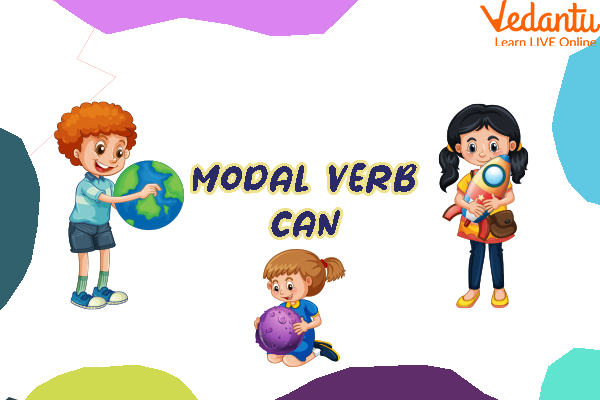




Key Uses and Practical Examples of the Verb ‘Can’
In the context of English grammar, we learn about the ‘can’ verb form. This form of the verb refers to the possibility and the ability that a person or thing possesses. But, what do we understand about verbs? Also, how is this modal verb used in the English language?
Let us understand the topic vividly in this discussion.
The Verb in the English Language
Verbs in English means the action words which help a reader or a listener understand what action is taking place in a line or a conversation.

Can is a modal verb
While ‘can’ is a modal verb that belongs to a second group of the verbs in English grammar.
Varied Contextual Meaning of ‘Can’ Verbs
The ‘can’ verb form has a variety of contexts. Let us have a quick check on the varied meaning of ‘can’ verbs:
‘Can’ verbs mean the verbs which are able to do something or any action that is to take place. (For example, can she write a letter?)
The ‘can’ verb talks about the things which are permitted or allowed or to make any requests. (For example, can we take photographs here? or, you can have this pie, or can you please call the head chef?)
‘Can’ is allowed as a possibility of doing something. (A natural calamity can hit us anytime.)
Now we will discuss the various situations where the ‘can’ verb is used.
‘Can’ Used as Conjugation
In these following forms, the ‘can’ verb is used as conjugation:
I can
You can
He/she/it can
We can
You can
They can
The negative form of the conjugation:
I can’t / cannot
You can’t / cannot
He/she/it can’t / cannot
We can’t / cannot
You can’t / cannot
They can’t / cannot
‘Can’ Verb in the Present Form
Let us see some examples of the ‘can’ form of the verb which is used in the present form:
Luv and Kush can go for the picnic.
Binita can go to her dance classes tomorrow.
Anne and Peter can hit the beaches later.
Rahul can’t go to work today because he has a stomach ache.
Can your sister help us with the funds?
Lisa and I cannot play outside, it is raining.
Can I call you later? I am busy packing my bags.
Can Sunita pick me up from the supermarket?
Simple Past of Can Verb Form
The past simple tense of the can is could. So, let us see its forms:
I could
You could
He/she/it could
We could
You could
They could
Now the negative format:
I couldn’t
You couldn’t
He/she/it couldn’t
We couldn’t
You couldn’t
They couldn’t
Some sentence examples of could/couldn’t are as follows:
Could you go to the kitchen, please?
I couldn’t make up for the party, I was late
John couldn't ride his bike but now he is the champ on the road.
I couldn’t understand a single thing she whispered through the call.
Meena is cooking now, she couldn’t cook before.
The ‘Yes’ or ‘No’ Questions with the Verb ‘Can’
Can I…?
Can you…?
Can he/she/it…?
Can we…?
Can you…?
Can they…?
Future Form of Can
The ‘can’ verb in the future form is used as - ‘Be able to’
I am able to
You are able to
He/she/it is able to
We are able to
You are able to
They are able to
Let's check some examples with the sentences:
We will be able to hit the beach now, we’ve finished the project!
Are you able to help me with the fencing later?
I am working this weekend, I will not be able to go to the movies.
So, do you see the different styles and contextual meanings where the ’can’ verb is used? Also, the ‘can’ verb is adjusted to the past tense and the negative formats as well. How can you refine your understanding? You can read and talk frequently, being aware of the ‘can’ verb you are using and analysing how it changes in different contexts.
FAQs on Master the Verb ‘Can’: How and When to Use It in English
1. How teaching shapes to kids is one of the interesting activities to do?
Kids have a free mind and they dynamically grasp everything and these dynamic abilities are enhanced by their observation skills. However, teachers need to follow a step-by-step easy approach while teaching preschool kids. Basic shapes and colours leave a long-lasting impression on children. They try to comprehend their atmosphere by observing the different objects around them.
All kinds of objects and structures help kids in understanding shapes. As a teacher, one should introduce different shapes to a class at the very start of their studies. There are various shape activities in kindergarten that help preschool kids learn and understand fundamental shapes.
2. What are the various ways of teaching shapes to kids?
It is important to understand the methods that can be employed to teach shapes to kids. In the list below, you can find various ways to teach the same:
Visual Information
Sign and symbols
Alphabets and numbers
Mathematical concepts
Categorization and comparison
Problem-solving
Symmetry





















